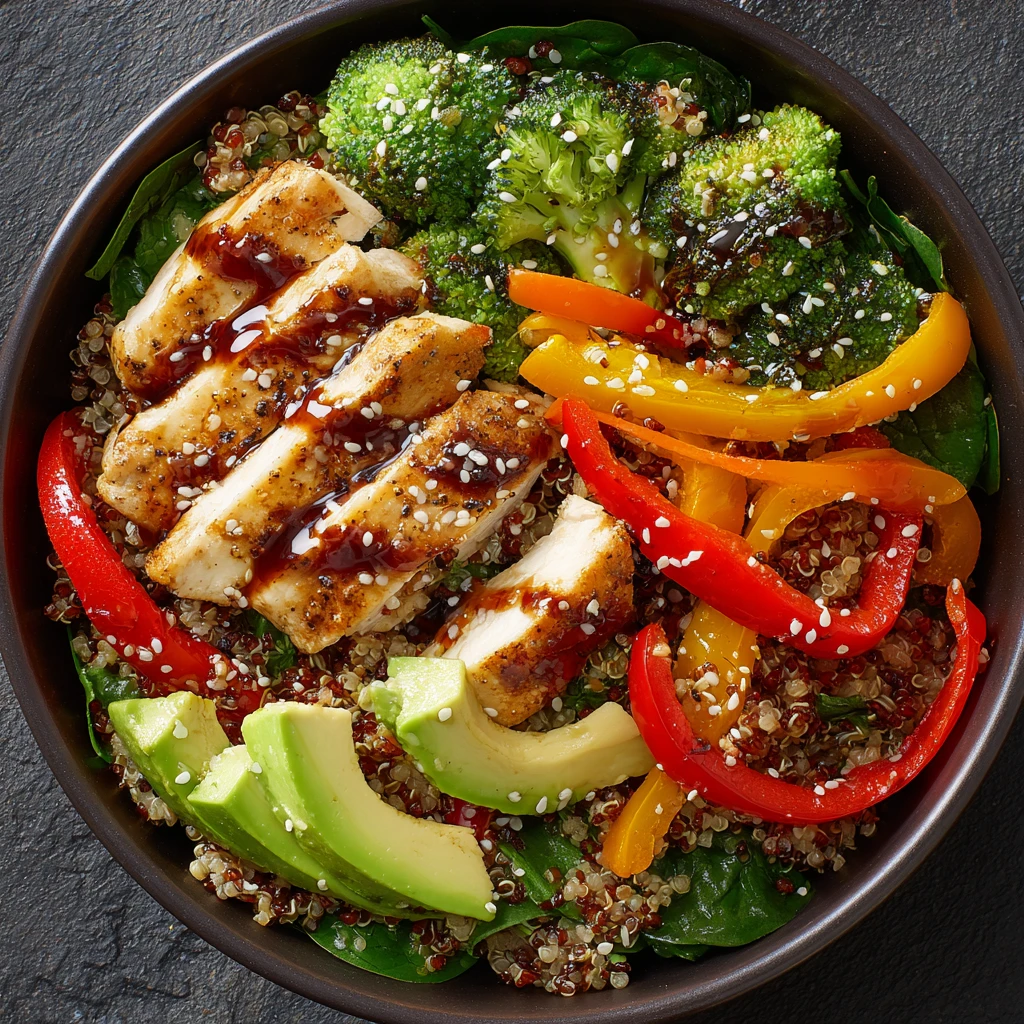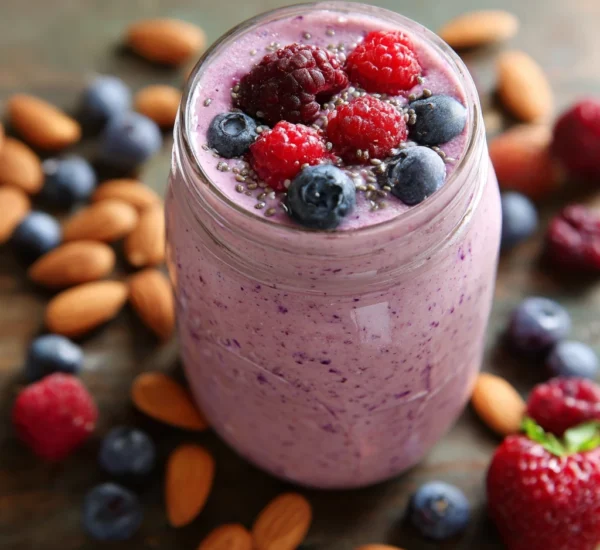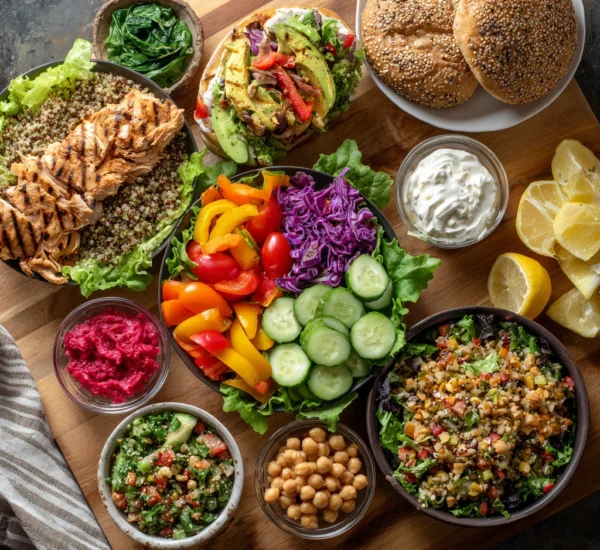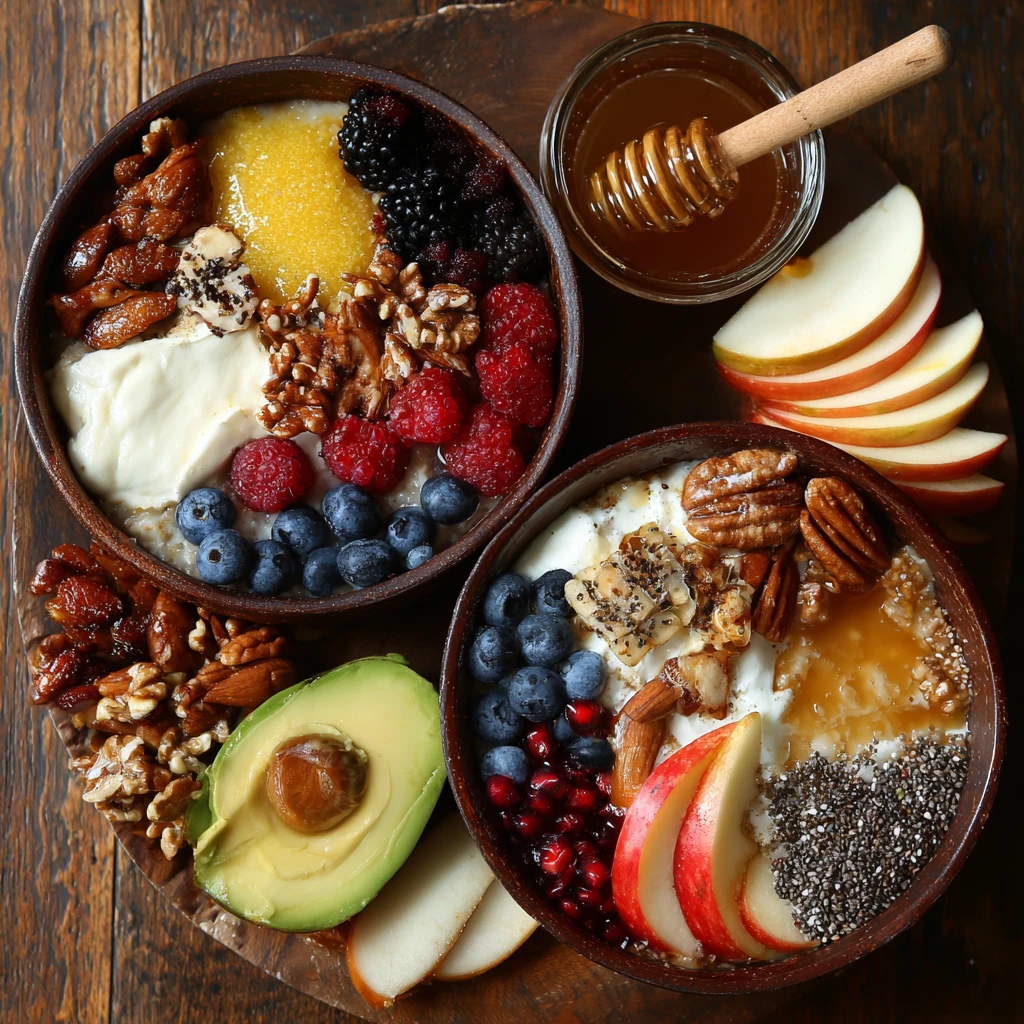How to Build a Balanced Plate Every Time: A Simple Guide to Healthy Eating
Creating a balanced plate at every meal is a cornerstone of healthy eating. It’s a visual guide that helps you ensure you’re getting the right nutrients in the right proportions. This article will provide you with a comprehensive guide to building a balanced plate, making healthy eating sustainable and enjoyable.

Understanding the Balanced Plate Concept
The balanced plate method is a practical approach to portion control and nutrient distribution. It aims to incorporate all the essential food groups in appropriate ratios, promoting overall health and well-being. Think of it as a personalized blueprint for each meal.
Why is a Balanced Plate Important?
A balanced plate offers numerous benefits:
- Provides Essential Nutrients: Ensures you get a variety of vitamins, minerals, protein, carbohydrates, and healthy fats.
- Promotes Satiety: Combining different food groups keeps you feeling fuller for longer, reducing overeating.
- Stabilizes Blood Sugar: Fiber-rich carbohydrates and protein help regulate blood sugar levels, preventing energy crashes.
- Supports Weight Management: Proper portion control and nutrient balance contribute to a healthy weight.
- Enhances Overall Health: Reduces the risk of chronic diseases like heart disease, type 2 diabetes, and certain cancers.
Key Components of a Balanced Plate
The balanced plate typically includes the following components, each playing a vital role:
- Non-Starchy Vegetables (Approximately 50% of the Plate): These are nutrient powerhouses packed with vitamins, minerals, and fiber. Examples include leafy greens, broccoli, cauliflower, bell peppers, and tomatoes.
- Protein (Approximately 25% of the Plate): Protein is essential for building and repairing tissues, supporting immune function, and promoting satiety. Sources include lean meats, poultry, fish, beans, lentils, tofu, and eggs.
- Starchy Carbohydrates (Approximately 25% of the Plate): Starchy carbohydrates provide energy for your body and brain. Choose whole grains whenever possible. Examples include brown rice, quinoa, whole-wheat bread, sweet potatoes, and corn.
- Healthy Fats (Smaller Portion): Healthy fats are crucial for hormone production, brain health, and nutrient absorption. Include sources like avocado, nuts, seeds, olive oil, and fatty fish (salmon, tuna).
- Dairy (Optional): Dairy products like milk, yogurt, and cheese provide calcium and vitamin D. Choose low-fat or non-fat options. If you avoid dairy, consider calcium-rich alternatives like fortified plant-based milk.
Step-by-Step Guide to Building a Balanced Plate
Now that you understand the components, let’s walk through the process of creating a balanced plate:
Step 1: Choose Your Non-Starchy Vegetables
Fill half of your plate with a variety of colorful non-starchy vegetables. Focus on seasonal produce for maximum flavor and nutritional value.
- Tips for Vegetables:
Aim for variety: Mix different colors and textures.
Cook vegetables using healthy methods: Steaming, roasting, grilling, or sautéing with minimal oil are excellent choices.
Don’t be afraid of frozen vegetables: They are often just as nutritious as fresh and more convenient.
Step 2: Add Your Protein Source
Allocate approximately one-quarter of your plate to a protein source. Choose lean options and vary your protein sources throughout the week.
- Tips for Protein:
Trim visible fat from meat and poultry.
Bake, grill, or broil protein sources instead of frying.
Include plant-based protein sources regularly.
Limit processed meats like bacon and sausage.
Step 3: Incorporate Starchy Carbohydrates
Fill the remaining quarter of your plate with starchy carbohydrates. Prioritize whole grains and complex carbohydrates over refined options.
- Tips for Carbohydrates:
Choose whole-grain bread, pasta, and rice.
Opt for sweet potatoes over white potatoes.
Read nutrition labels to ensure you are selecting whole-grain products.
Be mindful of portion sizes.
Step 4: Include Healthy Fats
Add a small portion of healthy fats to your meal. These fats are essential for overall health but are calorie-dense, so moderation is key.
- Tips for Healthy Fats:
Use olive oil for cooking and salad dressings.
Add avocado slices to salads or sandwiches.
Sprinkle nuts and seeds on yogurt or oatmeal.
Choose fatty fish like salmon a few times per week.
Step 5: Don't Forget Dairy (Optional)
If you consume dairy, include a serving of low-fat or non-fat milk, yogurt, or cheese.
- Tips for Dairy:
Choose plain yogurt over flavored varieties to reduce added sugar.
Opt for low-fat or non-fat milk.
If you are lactose intolerant, try lactose-free dairy products or calcium-fortified plant-based alternatives.
Adapting the Balanced Plate to Different Dietary Needs
The balanced plate method is highly adaptable to various dietary needs and preferences. Here’s how to modify it for common dietary restrictions:
Vegetarian and Vegan Diets
Vegetarians and vegans can easily adapt the balanced plate by focusing on plant-based protein sources such as:
- Legumes: Beans, lentils, chickpeas
- Tofu and Tempeh: Made from soybeans
- Nuts and Seeds: Almonds, walnuts, chia seeds, flaxseeds
- Whole Grains: Quinoa, brown rice, oats
- Vegetables: Edamame
Ensure you are consuming a variety of plant-based foods to obtain all essential amino acids.
Gluten-Free Diets
Individuals with gluten sensitivities or celiac disease can adapt the balanced plate by choosing gluten-free carbohydrate sources:
- Rice: Brown rice, white rice
- Quinoa: A complete protein and gluten-free grain
- Potatoes: Sweet potatoes, white potatoes
- Corn: Corn tortillas, polenta
- Gluten-Free Bread and Pasta: Made from rice flour, tapioca flour, or other gluten-free flours
Always read labels carefully to ensure products are certified gluten-free.
Low-Carb Diets
For those following a low-carb diet, the focus shifts to reducing starchy carbohydrates and increasing healthy fats and protein:
- Non-Starchy Vegetables: Increase the portion size to fill a larger part of the plate.
- Protein: Maintain a consistent portion size of lean protein.
- Healthy Fats: Increase the intake of healthy fats from sources like avocado, olive oil, nuts, and seeds.
- Starchy Carbohydrates: Reduce or eliminate starchy carbohydrates, opting for small portions of non-starchy vegetables instead.
Addressing Specific Health Conditions
The balanced plate can be tailored to address specific health conditions like diabetes, heart disease, and high blood pressure. Consult with a registered dietitian or healthcare professional for personalized recommendations.
- Diabetes: Focus on controlling portion sizes and choosing low-glycemic carbohydrates.
- Heart Disease: Limit saturated and trans fats, and increase intake of omega-3 fatty acids.
- High Blood Pressure: Reduce sodium intake and increase potassium-rich foods.
Practical Tips and Meal Planning
Implementing the balanced plate method into your daily life requires some planning and preparation. Here are some practical tips to help you succeed:

Meal Planning and Preparation
- Plan your meals in advance: Create a weekly meal plan to ensure you have all the necessary ingredients on hand.
- Prepare ingredients in advance: Chop vegetables, cook grains, and portion out protein sources ahead of time.
- Cook in batches: Prepare larger quantities of meals and freeze portions for later use.
- Utilize leftovers: Repurpose leftovers into new meals to save time and reduce food waste.
Portion Control
- Use smaller plates: Smaller plates can help you visually control portion sizes.
- Measure your food: Use measuring cups and spoons to accurately portion out ingredients.
- Listen to your body: Pay attention to your hunger and fullness cues. Eat until you are satisfied, not stuffed.
Eating Out
- Plan ahead: Review the menu online before you go to make healthier choices.
- Choose wisely: Opt for grilled, baked, or steamed options over fried foods.
- Control portion sizes: Ask for half portions or share a dish with a friend.
- Modify your order: Request extra vegetables or substitute fries for a salad.
Common Mistakes to Avoid
- Overfilling your plate: Be mindful of portion sizes and avoid overeating.
- Skipping meals: Skipping meals can lead to overeating later in the day.
- Focusing solely on calories: Nutrient density is just as important as calorie count.
- Not planning ahead: Lack of planning can lead to unhealthy food choices.
Common Questions About Building a Balanced Plate (FAQ)
What if I don't like vegetables?
Start by trying different types of vegetables and preparation methods. Experiment with roasting, grilling, and sautéing to find ways you enjoy eating them. You can also add vegetables to dishes you already like, such as soups, stews, and smoothies.
Can I still eat my favorite foods?
Yes, you can still enjoy your favorite foods in moderation as part of a balanced diet. The key is to be mindful of portion sizes and make healthier choices most of the time.
How often should I aim for a balanced plate?
Aim to create a balanced plate at every meal and snack whenever possible. Consistency is key to achieving long-term health benefits.
Is it okay to eat the components of the balanced plate separately?
While it’s ideal to combine all components on one plate, it’s more important to ensure you’re consuming them throughout the day. For example, you could have a fruit and yogurt parfait for breakfast (combining carbohydrates, protein, and dairy), and a salad with grilled chicken and avocado for lunch (combining vegetables, protein, and healthy fats).
Do I need to measure everything I eat?
Initially, measuring can help you understand portion sizes. Over time, you’ll become better at estimating appropriate amounts visually. The goal is to develop a sustainable and intuitive approach to balanced eating.
Can the balanced plate help with weight loss?
Yes, the balanced plate method can be a helpful tool for weight loss. By focusing on nutrient-dense foods and controlling portion sizes, you can create a calorie deficit while ensuring you’re still getting all the nutrients you need.
What if I have a medical condition like diabetes?
If you have a medical condition, consult with a registered dietitian or healthcare professional for personalized recommendations on how to adapt the balanced plate to meet your specific needs.



